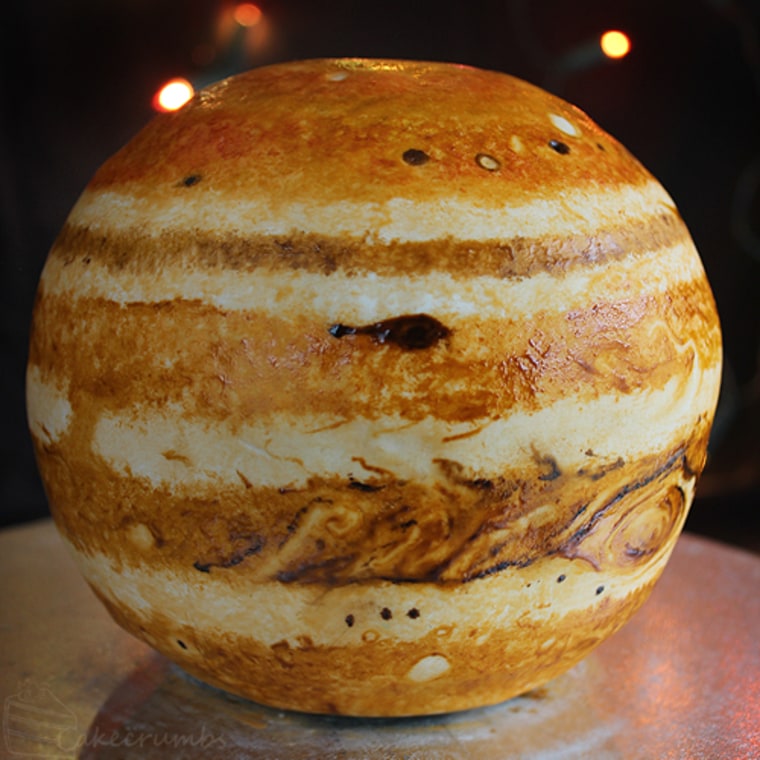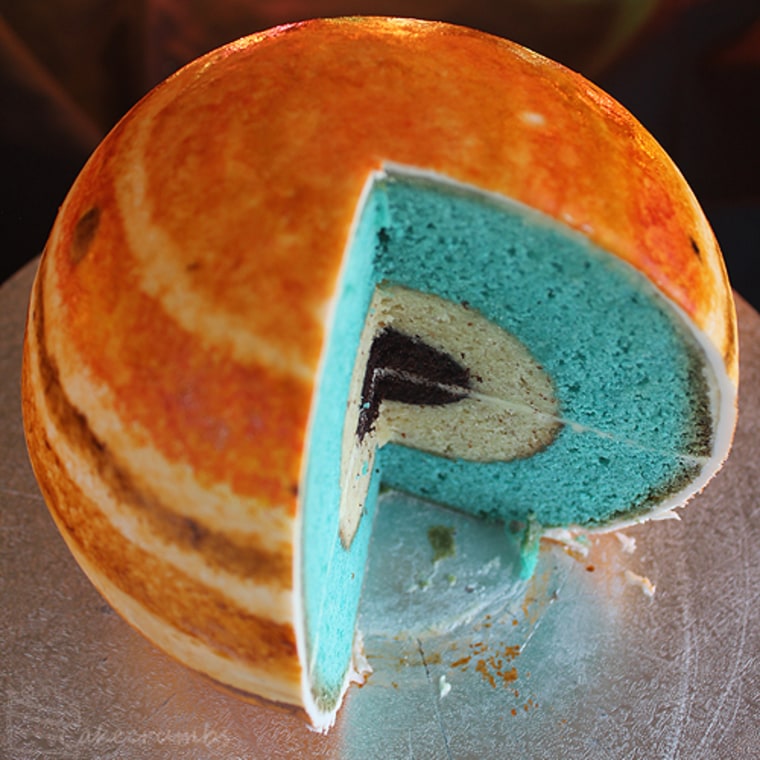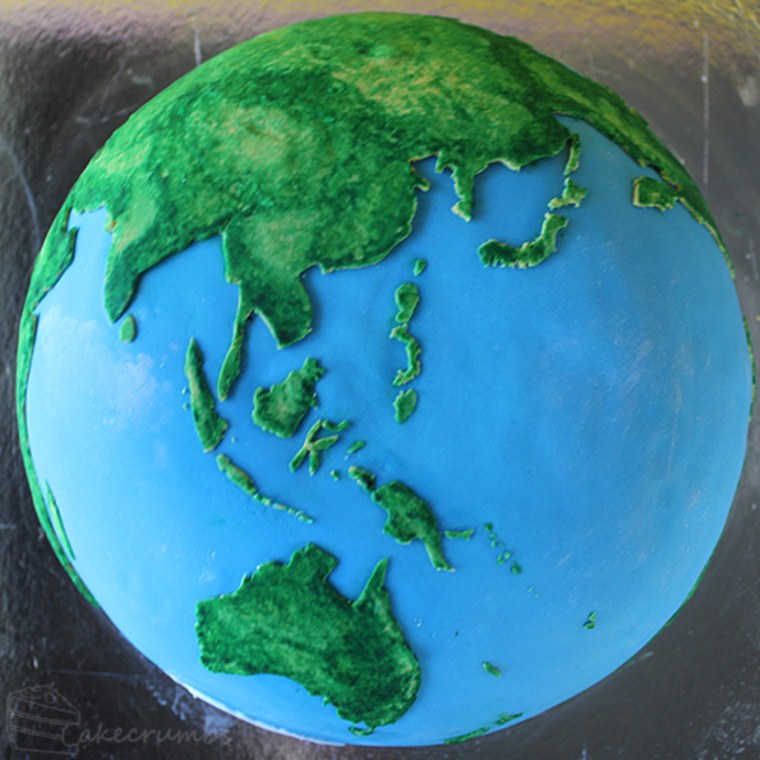Baking a cake just got a new planetary spin.
A self-taught Australian baker has crafted some truly out-of-this-world confectionary treats in the shape of familiar mainstays of the solar system. Rhiannon, the 25-year-old behind the blog "CakeCrumbs," has developed an easy-to-follow recipe for baking cakes in familiar planetary shapes, like those of Earth and Jupiter.
But these spherical cakes don't just look like their planetary inspirations on the outside; they also harbor a scientific secret within. The interiors of the Earth and Jupiter cakes both resemble the inner layers of the planets themselves. [See Photos of the Planetary Structure Layer Cakes]
"A little while ago, my sister approached me with an idea. She's doing an education degree, and her and her friends had to give a series of lessons on the geological sciences to a class of primary school kids," Rhiannon wrote in her blog post describing the Earth cake on May 24. "One of their lessons involved teaching the kids about the structure of the Earth. One of her friends came up with the idea of presenting a model of the Earth made out of cake. So my sister asked me if I could make a spherical cake with all the layers of the Earth inside it."

At first, Rhiannon wasn't sure how to create a planetary layer cake, but after some thought, she decided to bake a set of hemisphere cakes nested one within the other. She didn't bake a full globe, because there weren't enough students.
Rhiannon used a white, yellow and red cake to represent the inner core, outer core and mantel of the Earth, respectively. She covered the complete hemisphere with chocolate buttercream to represent the Earth's crust and put a layer of fondant over that to sculpt the continents and oceans. Fondant is an icing-like confection commonly used in cake decorating.
After making the Earth hemisphere for her sister's class, Rhiannon set her sights a little farther out into deep space. She refined her technique to create a fully spherical, layered Jupiter cake.
"Space is just so freaking cool," Rhiannon wrote. "Our solar system alone is filled with so many fascinating planets, dwarf planets and all their satellites. Choosing just one felt treacherous. In the end, I settled on Jupiter predominantly for one reason — its Great Red Spot. The giant anticyclonic storm has always been one of my favorite things and continues to be a subject of great fascination for me."

To craft the planetary delight, Rhiannon started off by baking Jupiter's core. She used mud cake to represent the innermost part of the planet. Rhiannon then encased the core in almond butter cake to represent a layer of liquid metallic hydrogen, then baked that and surrounded everything in a blue-colored, vanilla Madeira sponge cake representative of molecular hydrogen.
That process created one hemisphere of the gas giant; in order to make a full globe, Rhiannon simply created two hemispheres and connected them.
To represent the distinctive colors and storms of Jupiter's atmosphere, the baker drew on details using edible ink — and a little artistic license.
"It was kind of difficult to get good reference shots of the non–Red-Spot sides of Jupiter, particularly to get consistent ones," Rhiannon wrote. "They were all taken over many different years and influenced by many different weather events, so there was lots of variation. But I got enough to get a rough guestimate of the more static features of Jupiter's atmosphere."
You can read more about Rhiannon's project and watch a video tutorial of her planetary cake-building process on CakeCrumbs here.
Follow Miriam Kramer @mirikramerand Google+. Follow us @Spacedotcom, Facebook and Google+. Original article on Space.com.
- Photos: Jupiter, the Solar System's Largest Planet
- Jupiter: Giant, Windy Gas-Ball Protecting The Inner Solar System | Video
- Photos: Amazing Images of Earth from Space
